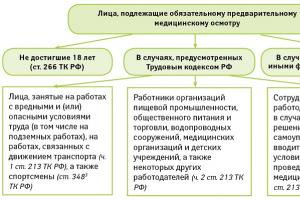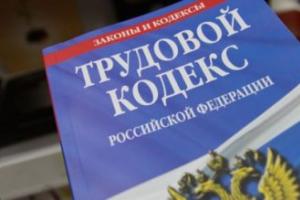The few but hardy Pomors deserve the highest, national importance. By mastering the North, they made it Russian. This is what our story is about today.
What kind of ethno-funeral is this?
As usual, we should start with etymology. “Pomors” is an ethno-horonym, that is, the name of the inhabitants of a certain area, which is correlated with one or another toponym. Other examples are Muscovite, Tula.
In the case of Pomors, there is no need to puzzle over where the name came from. Most likely, from the name of the western shore of the White Sea, where there is the so-called. Pomeranian shores. It is known that the majority of Pomors are Orthodox, and the language is Russian with an original dialect and a characteristic pronunciation of the letter “o”.
The Russian population who settled near the White Sea began to be called Pomors.
Slavic colonization of the north
Historians state: the name “Pomor” arose no later than the 12th century. During the XIV-XV centuries. it spread to the south and east from the western shore of the White Sea. Then the Novgorod Veche Republic took the “no man’s” lands of Pomerania under its guardianship. The Ilmen Slovenians (their capital, as is known, was Novgorod the Great) called these lands Zavolochye, or Dvina land. In the “Tale of Bygone Years” there are references to the pre-Russian population of Zavolochye: “Perm, Merya, Muroma, Mordovians, Pechera, Yam, Ugra.” From the names of the tribes it follows that they are of Finno-Ugric origin.
It is believed that the Slavic colonization of the North began in the 9th-11th centuries. There was a reason for this: the northern region turned out to be rich in furs, sea animals, fish and poultry. Archaeological finds and toponymy record traces of residence of both the Slavs and Finno-Ugric peoples.
The anthropological type of Pomors is dominated by Slavic ones, but there are also Finno-Ugric features. Somewhat later, immigrants from the Vladimir-Rostov-Suzdal lands, and even later Vikings, mainly Norwegians, made their contribution to the formation of the Pomeranian community.
The Pomors were formed on a Slavic basis, but also include other ethnocultural elements.
What and how did they trade?
By the 16th century We can definitely say that the Pomors formed as an ethnographic entity. The Pomors conducted a specific fishing and hunting economy. Winter hunting began in February and continued until the end of March. In places where industrialists gathered, special fishing huts were built for one or two boats (7-15 people).
In the 17th century The Pomors were tightly integrated into the system of the All-Russian domestic market as a marine fishing and animal fishing area. The Pomors developed barter trade and did business not only with Russians, but also with Norwegians. In exchange for gifts from the north, they received much-needed bread.
Contacts with the aborigines took place without any particular conflicts: there was more than enough space for fishing, and there were few reasons for hostility. Slavic Pomors organically interspersed with the settlement area of various tribes, guarding the North.
The northerners produced a lot of fish and furs “for export”, and this is how they lived in difficult natural and climatic conditions.
How the North was mastered and not only it
After the victory of Ivan III over the Novgorodians on the river. Sheloni (July 1471) Pomeranian lands became part of the Moscow state. During the period of centralization of the Russian state, the processes of colonization of the North received new, additional impulses. Gradually, the task of developing these lands is acquiring national importance.
In the XVII-XVIII centuries. The passionate activity of the Pomors reaches its highest peak. By this time, the Pomors had everything they needed for long trips to the Arctic Ocean. Northerners are exploring new territories. Among them are Northern Siberia, Novaya Zemlya and Spitsbergen.
The sea routes that later became famous were laid. “The march to the German end” went along the shores of the Kola and Scandinavian peninsulas. “Mangazeya sea passage” - from the mouth of the Taz river in northwestern Siberia, and “Yenisei passage” - to the mouth of the river. Yenisei. The “Novaya Zemlya course” is to the islands of Novaya Zemlya, and the “Grumland passage” is to the Spitsbergen archipelago. The opening of these routes allowed the Pomors not only to establish trade in sable and arctic fox furs, but also to expand the borders of the Russian state.
By the middle of the 18th century. Pomors helped Russia develop the Aleutian Islands and Alaska. Since 1803, people from Pomerania settled on the West Coast of North America, which, at that time, was not inhabited by the Anglo-Saxons and other Europeans. In 1812, Pomeranian merchant Ivan Kuskov founded Fort Ross, which became the first European settlement in Northern California (80 km from modern San Francisco).
The Pomors made a significant contribution to the expansion of the territory and borders of the Russian Empire.
Ethnicity or subethnicity?
Foreigners who visited Pomorie gave the following characteristics to the locals: reserved, hospitable, trusting, hardworking, taciturn. Staying away from the main area of residence of the Russians formed the distinctive features of the Pomors. They manifested themselves in everyday life, in arts and crafts, and in dialect.
But it is probably impossible to say that Pomors are not Russians, but an independent ethnic group. Over the centuries of their difficult activity, the Pomors acquired special features, but remained part of the Russian ethnic group.
During the 2002 All-Russian Population Census, 6,571 people called themselves Pomors. Among them was the then governor of the Arkhangelsk region, Anatoly Efremov. According to the 2010 census, 3,113 people were identified as Pomors. The reduction is caused by the loss of Pomor identity by a significant part of the population of the Arkhangelsk and Murmansk regions.
Although even now there are activists advocating for the recognition of Pomors as a separate people, their number is small. At the same time, the word “Pomor” itself became a brand of the Arkhangelsk region. Residents of the Russian North care about him with special warmth. As we know, the North cannot survive without it.
Literature:
Lomakin V. Series of lectures “Pomorie and Pomors: history and modernity. 2009.
Mikhaleva A.V. Ethnocultural dimension of the regional positioning of the Arkhangelsk region // Bulletin of Perm University. Series: Political science. 2013. No. 4.
The beginning of the Russian advance to the north and northeast to the shores of the White and Barents Seas must be dated back to the 9th-10th centuries.
Three main motives drew the Russians to the harsh North. The first is the desire to escape boyar oppression and internecine wars. The second is the desire to escape religious persecution. The third is the hope of getting out of poverty in the rich fisheries and animal industries of the White and Barents Seas.
A forced change of religion, under the compulsion of the authorities, always and everywhere caused resistance, sometimes expressed in uprisings, sometimes in a kind of going underground, and sometimes in relocation from their homes to new areas.
Thus, Academician Lepekhin wrote: “During Vladimirov’s baptism, many, and especially those from Novgorod, who did not want to accept the Christian faith, leaving their homes, moved to these places, which, due to their remoteness and local situation from the Vladimirovs’ searches, seemed safe to them, and to them due to trade were already known...”
At the end of the 9th and beginning of the 10th centuries. The flow of Russians to the north and northeast intensified, similar to what began in the 15th century. and especially intensified in the 17th century. the persecution of the schismatics caused a new intensified advance of the Russians also to the north and northeast.
Fishing and hunting in the White and Barents Seas attracted not only industrialists, but also merchants who exchanged their catch from industrialists, and caused the development of navigation and shipbuilding, especially since the banks of the rivers flowing into the White Sea were rich in timber.
Very little written information about the beginning of Russian settlement of the shores of the White and Barents Seas has been preserved. One of the most ancient records about the Slavs in our north is from the Arab writer Abu Hamed, who in the first half of the 10th century. reported “about the Yugras who lived in the north of the Urals - as if they were buying iron blades from the Slavs at an expensive price...”
Abu Hamed could have heard about this from Persian and Arab merchants who traded with the Russian North.
This trade was interrupted by the Tatar invasion, and after the opening of sea routes to India by the Dutch, it ceased altogether.
But if trade relations between the North and South were stopped by the Tatar invasion, then relations between the West (Novgorod) and the East (Northwestern Siberia) continued to develop. Thus, the First Sofia Chronicle tells that already in 1032 the Novgorodian Uleb went to the “Iron Gate”.
A well-known expert on our North, Vasily Vasilyevich Krestinin, wrote: “This previously unknown name (Iron Gates) in the geography of our northern countries now raises a new question, in the discussion of the Novgorodians’ campaign for the Iron Gates, which took place in the summer of 1032, in the Novgorod chronicler; Should the river campaign of the Novgorodians be attributed to this or to the Vaigach Gate?”
From the above excerpt it follows that Krestinin considered it possible for the Novgorodians to penetrate the Kara Sea in the first half of the 11th century.
In 1079, the Novgorod prince Gleb Svyatoslavovich died in the northern Urals. The chronicle of Nestor under 1096 says that around 1092 the Novgorodians, on the orders of Gyuryata Rogovich, went to Pechora and Ugra for tribute.
The areas near Kholmogory were mentioned in written sources in 1137. The Monastery of Michael the Archangel at the mouth of the Northern Dvina was founded between 1110 and 1130. In the first half of the 12th century. among the Novgorod possessions the Tersky coast of the White Sea Throat is mentioned.
It is unknown when exactly Kola was founded on Murman, but it was first mentioned in the Norwegian chronicle in 1210, and in the Russian chronicle in 1264.
It is curious that already from 1200 the Norwegians were forced to maintain a permanent naval guard to protect against Russian raids, and in 1307 they even built the Vardehuz fortress in the extreme northeast of Norway (our Pomors called it Vargaev.)
It has already been emphasized that the chronicles primarily noted events that most affected the interests of contemporaries. But such events as the founding of a city, a monastery, the establishment of a naval guard, the long campaigns of the Novgorodians to the Urals, must have their own prehistory, sometimes long, but usually not noted by written sources. Therefore, to clarify the time of the appearance of Russians on the shores of the White and Barents Seas, one has to resort to indirect conclusions.
Firstly, we must take into account the fact that during their advance to the northeast from the ancient centers of their settlements - Novgorod and Ladoga - the Novgorodians right up to “Kamen” (Ural) almost did not encounter resistance, since there were no many people on their way. any organized state associations. Secondly, on this path they encountered many rivers and lakes, which greatly facilitated their progress.
Rivers and lakes in those days, especially in the geographical conditions of the Russian North, were essentially the only means of communication - in the summer on rafts and boats, in the winter - on sleighs and skis on flat ice. Rivers and lakes provided settlers with fish, and coastal forests provided material for building boats, houses, and fuel. Hunting on lakes and forests provided food and furs.
From Lake Ilmen it was easy to get along the Volkhov to Lake Ladoga, then along the Svir to Lake Onega, and then along the Vodla to Vodlozero. Further from the river basins of the Baltic Sea, it was not difficult to move along short portages to the rivers flowing into the White Sea (and the Slavs acquired the skills of moving along rivers and portages during the development of the route “from the Varangians to the Greeks”). Thus, the Novgorodians gradually reached Kem and Onega, then the Northern Dvina and Pechora.
It should be noted that the so-called Pomeranian coast (the western coast of Onega Bay) is very convenient for the initial development of the sea. This coast is very indented and forms many lips and bays, which are well protected from winds and swell by the Onega skerries stretching along the Pomeranian coast
It is natural to assume that part of the Novgorodians moving east, having reached Onega, separated and descended along Onega to the White Sea. Here the flow of Novgorodians again split into two. Some climbed along the shores of the White Sea north to Kandalaksha, and then along rivers and portages reached Kola (hydrographer N. Morozov, noting that between Kandalaksha and Kola there was only one portage about one kilometer long, believed that the Russians penetrated into Kola from Kandalaksha ).
The other part, turning east at the exit from Onega Bay, reached the mouth of the Northern Dvina by sea, perhaps even earlier than those Novgorodians who crossed Onega during their movement to the east and descended along the Northern Dvina to its mouth.
Unfortunately, there is no direct data confirming such assumptions. Indirect confirmation of such assumptions is the great similarity of events during the advance of the Novgorodians to the east in the X-XII centuries. and events during the advance of explorers and sailors in Siberia in the 16th and 17th centuries.
As we will see later, the Russians, moving east through Siberia, simultaneously descended along the rivers to the Arctic Ocean and then crossed by sea from the mouth of one river to the mouth of another. The motivations that forced them to choose such paths were the same among both the Novgorodians and the Siberian explorers - this was the search for fishing grounds, the search for new tribes with whom barter trade could be carried out and on whom taxes could be imposed.
One cannot think that the Novgorodians, who committed in the 11th century. campaigns to Pechora and Ugra, the entire long journey from Novgorod to the Urals were made through unknown uninhabited areas. Thus, if, according to the chronicles, the Novgorodians already by the end of the 11th century. mastered military and trade routes in the Trans-Urals, then we must assume that they appeared on the shores of the White Sea no later than the end of the 10th century.
In the publications of newspapers and magazines you can find information about Russian ethnic groups - about the Cossacks, Great Russians, Little Russians, Belarusians and Rusyns. But very little is said about the ancient Russian people - the Pomors. The people living on the outskirts of the legendary Hyperborea and on the territory of the disappeared country of Biarmia. But the Pomors have done and are doing a lot for the Russian state. From the Pomors came such famous people as the scientist Mikhail Lomonosov, Admiral of the Fleet of the Soviet Union Nikolai Kuznetsov, the sculptor Fyodor Shubin, as well as Ermak Timofeevich (some regions of Russia dispute the Pomor origin of Ermak), Semyon Dezhnev, Erofey Khabarov, Atlasov and many other explorers who Long before the Cossacks, they penetrated beyond the Urals and developed the Siberian lands, and later began the development of the Far East and Alaska. The permanent ruler of Alaska, Alexander Baranov, also came from Pomors. For information, the current city of Sitka (Alaska) was previously called Novoarkhangelsk.

The Pomors were largely isolated from the bulk of the Russian people - so much so that many researchers consider them a separate subethnic group and even an ethnic group.
We will not go into these disputes, we will simply state a fact: long distances, religious differences (most Pomors were Old Believers, and they formed a separate branch among other countless Old Believer movements - the Pomorian consent), a different way of life (the Pomors knew neither serfdom nor ruinous raids and wars from which the southern regions of the country suffered for centuries) and the proximity to those nationalities that residents of other Russian regions did not encounter - all this left a significant imprint on Pomor culture.

BIARMIA AND ZAVOLOCHE
In the 9th - 13th centuries, Scandinavian sailors called the north of the European part of Russia Biarmia (1222 was the last year Biarmia was mentioned in the Scandinavian chronicles). The Slovenian-Ilmen (Novgorodians) called these lands Zavolochye, or Dvina land. Zavolochye lay to the east of the system of portages connecting the basins of the Neva, Volga, Northern Dvina and Onega rivers in the area of the White and Kubenskoye lakes.

The specifics of human life in the conditions of the North also formed a special type of population. Pomors are a distinctive self-name (ethnonym) of the indigenous ethnic community of the European North of Russia (Pomerania), the eastern neighbors of the Norwegians, living along the banks of the North Russian rivers and seas. They are the northernmost East Slavic people in the world, anthropologically belonging to the North European type.
Pomors can be considered one of the most ancient subethnic groups in Russia in terms of the time of their origin. The ethnonym “Pomors” arose no later than the 12th century on the southwestern (Pomeranian) coast of the White Sea, and during the 14-16th centuries it spread far to the south and east from its place of origin . Note that Russia did not yet exist at that time, and the name “Great Russians” arose only in the 19th century.

What influenced the formation of the Pomor ethnic group?
The ethnogenesis of the Pomors was determined by the fusion of the cultures of the Protopomorian, predominantly Finno-Ugric (Chud) tribes of the White Sea region and the first ancient Russian colonists, the Slovenian Ilmen people, who actively populated the territories of Zavolochye. Written sources, archaeological finds, toponymy, and folklore legends testify to the cohabitation of the Chuds and the first Slovenian settlers.
Slovenian-Ilmenians, immigrants from Veliky Novgorod, who, having come to the lands inhabited by the Chud, Finno-Ugric and other tribes, mixed with them and assimilated the latter.
The indigenous inhabitants of Biarmia were finally conquered by the Novgorodians in the 11th century, says the Dvina chronicler, but back in the 9th century, the merchants of Veliky Novgorod dotted all the main rivers of Biarmia with their trading posts, and stubborn pagans from other places of what was then Russia, having fled to the north with their gods, strengthened the area even more. Slavic element. After the baptism of Rus' in 988, Russians who did not accept Christianity went here. Until the 19th century, there were settlements in Pomerania where they professed the pre-Christian faith.

In the anthropological type of “Northern Russian” Pomors, some Finnish traits are observed that arose from mixed marriages. Much later, immigrants from the Vladimir-Rostov-Suzdal lands added a share of their blood, and even later the Normans - Vikings or simply Norwegians - Scandinavians.
Everything taken together led to the emergence of the Pomeranian language (“Pomeranian speaking”), which was different from the rest of Rus'.
Due to the close connection of the Pomors with Norway and the fact that the Pomors lived in northern Norway and on the Grumant Islands (Spitsbergen), the Rusnorg language was formed (70% Pomeranian words, the rest - Norwegian). Rusnorg was banned for use by the Bolsheviks in 1917.
Anthropologically, Pomors are distinguished by their above average height, blond hair and eye color.

VIKINGS
Since the 12th century, Zavolochye has become a bone of contention. According to the legends of local residents, fights took place not only between the Russians and Chud, but also between the Novgorod boyars and the Rostov-Suzdal princes. They regularly had to “deal” with the Vikings. The Novgorod Chronicle mentions that the Normans (Murmans) repeatedly raided Zavolochye (Dvina land) belonging to Veliky Novgorod. Clashes between Russians and Normans mainly occurred over fisheries in the northern seas.
It should be noted that starting from the 10th century, Viking trips to the White Sea for the purpose of robbery and robbery were commonplace. Norwegian sagas tell in detail about the “exploits” on the White Sea coast and at the mouth of the Northern Dvina of many sea robbers who bore characteristic names, such as Eirik the Red Axe, Harald the Gray Cloak, Thorer the Dog and others. The warriors of the Norwegian kings, and subsequently the Swedes, did not disdain raids on the rich region, since they did not receive serious resistance from the disorganized indigenous Chud population.
But things changed completely when Russians appeared in the region. They not only successfully repelled attacks from overseas aliens, but often went on the offensive themselves, making campaigns against Norway. To protect their territory, the Norwegians were forced to build the Vardehus fortress in the north of the country in 1307, which in the old days was called by the Pomors Vargaev (the present city of Varde) ...
One of the episodes of this long struggle in the Dvina Chronicle says this: “The Nikolaev Korelsky Monastery Murmane (Norwegians) came in number 600 from the sea in beads and augers (small sailing and rowing Scandinavian ships), in 1419 they burned and flogged the Chernets.” .
Residents of Zavolochye even paid tribute to Norway, and sometimes they themselves raided Norwegian lands (1349, 1411, 1419 and 1425), plundered Norwegian settlements, captured girls and married women (sometimes with children) and took them to Pomerania. This is where the Pomors get their Scandinavian genes.

After the split of the Orthodox Church in the 17th century, people who did not accept Nikon’s innovations moved here. Moreover, a powerful Old Believer movement developed in Pomorie. The Solovetsky monastery resisted the tsarist troops for more than 7.5 years. Over time, these factors formed the Old Russian Pomeranian Orthodox Church. The next condition that influenced the formation of the Pomor ethnic group was that the Pomors did not know serfdom and the Horde yoke. The following facts speak about the love of freedom and independence of the Pomors: tsarist officials addressed the Pomors only by name and patronymic, while in the rest of Russia people were called by diminutive nicknames. Even Ivan the Terrible did not dare to cancel the decisions of the “Pomeranian World” (something like the Cossack Circle, but with greater powers). And in 1589, in contrast to the Code of Laws of 1550, designed for serfdom, the “Pomeranian Code of Laws” was developed, in which a special place was given to the “Articles on Dishonor”.

Pomors - a people of Arctic seafarers, hunters and fishermen - are the only (!) indigenous sea people in the West Siberian part of the Arctic. No other indigenous people of North-West Russia - neither the Sami, nor the Nenets, nor the Karelians, nor the Komi - went to sea or engaged in long-distance sea trades.
Many maritime terms of the Pomors do not belong to either the Slavic or Finno-Ugric languages.
Like the Norwegians, the Pomors are a sea people. But, unlike the long and narrow ships of the Norwegians (which sailed in narrow fjords and open water), the ships of the Pomors were adapted to sailing among the ice. Therefore, for a long time the Norwegians had no idea about the spaces and lands that lie behind the Arctic ice east of the White Sea.

Since ancient times, the only owners of these Arctic spaces were the Pomors.
Many centuries before the Barents, the Pomors discovered and developed the entire eastern part of the Barents Sea - Novaya Zemlya (which the Pomors call “Matka”). Pomors have long mastered Spitsbergen (in Pomeranian “Grumant”), and made months-long voyages along the northern sea route to Siberia and even to the Far East - to the Sea of Okhotsk (in Pomeranian “Lama Sea”).
Thus, the Pomors played a special role in the development of northern sea routes and the development of shipbuilding. The famous Russian admiral Litke aptly dubbed them “Eternal Sailors.”
Writer Mikhail Prishvin, during his trip to the North, was surprised to learn that “until now Russian sailors do not take into account the scientific description of the Arctic Ocean. They have their own sailing directions... the description of the sailing directions by the Pomors is almost a work of art. On one side is reason, on the other is faith. While signs are visible on the shore, the Pomor reads one side of the book; when the signs disappear and a storm is about to break the ship, the Pomor turns the pages and turns to Nikolai Ugodnik.
Nikola - Sea God. This is what the Pomors called St. Nicholas the Wonderworker, who is recognized throughout the world as the patron saint of sailors.
However, even though he is a holy healer and liberator, in the Pomeranian view he is vengeful and touchy, like a pagan god.

Pomeranian Kochi covered 150-200 kilometers per day, while English merchant ships - about 120 kilometers, and Dutch frigates - only up to 80-90 kilometers.
On these unique ships, the Pomors reached such Arctic latitudes that were inaccessible to any other ships with a metal hull and mechanical engines. They were unique not only for their protective “fur coat”, but also for their egg-shaped body. The bottom of the body was rounded, resembling half a nutshell. If the ice squeezed such a ship, its hull was not crushed, but squeezed outward. These ships, reputed to be the most durable for five centuries, acquired, thanks to the skill and inquisitive mind of the Pomeranian craftsmen, another unusual feature: the stern and bow had almost the same shape and were cut at an angle of 30 degrees, which made it easy to pull them ashore.
A certain number of nomads survived until the beginning of the twentieth century, when they were noticed and appreciated by F. Nansen, who by that time had planned a difficult expedition to the North Pole. When choosing a prototype for the construction of the ship "Fram", which, according to the plan, was supposed to drift in the ice, he abandoned all the latest types of steel ships and decided to build the ship according to the experience of nomadic craftsmen, from the best types of wood, with an egg-shaped hull than ensured the successful completion of the expedition.

Admiral S.O. Makarov, when developing a model of the world's first icebreaker, took Nansen's advice and also opted for an egg-shaped hull and, following the example of the Pomeranian Kochi, cut off the bow and stern. These ingenious inventions of the ancient Pomeranian craftsmen turned out to be so successful that even today, a century after the creation of the world’s first Makarov icebreaker “Ermak”, they are considered unsurpassed for the construction of ice-going ships.
...And today the great-grandsons of the ancient Pomeranian ships ply the icy northern seas - the nuclear-powered ships "Siberia", "Arktika", "Russia", so strikingly similar to their undeservedly forgotten, beautiful, technically perfect ancestor - the ancient Koch.
By the will of fate, they became a worthy monument to him.
The Pomors have not disappeared today. Stereotypes of behavior, self-designation, ethnic self-awareness and a sense of “specialness” have been preserved. The Pomeranian spirit and Pomeranian character are the values that our ancestors forged over the centuries, fighting for self-survival and existence in the harsh conditions of the North and the development of the Arctic. It is these values that continue to define the essence of modern Pomors.
Unfortunately, Pomorie is gradually emptying out. The high mortality rate and outflow of population is caused by the fact that the center, using barbaric methods, pumps oil, gas, diamonds and timber from the region, and does not want to give anything in return.
Domestic navigators - explorers of the seas and oceans Nikolai Nikolaevich Zubov
2. Exit of Novgorodians to the shores of the White and Barents seas
The beginning of the Russian advance to the north and northeast - to the shores of the White and Barents Seas - must be dated back to the 9th–10th centuries.
Three main motives drew the Russians to the harsh North. The first is the desire to escape boyar oppression and internecine wars. The second is the desire to escape religious persecution. The third is the hope of getting out of poverty in the rich fisheries and animal industries of the White and Barents Seas.
A forced change of religion, under the compulsion of the authorities, always and everywhere caused resistance, sometimes expressed in uprisings, sometimes in a kind of going underground, and sometimes in relocation from their homes to new areas.
Thus, Academician Lepekhin wrote:
“During Vladimirov’s baptism, many, and especially those from Novgorod, who did not want to accept the Christian faith, leaving their homes, moved to these places, which, due to their remoteness and local situation from the Vladimirov searches, seemed safe to them, and because of trade they were already known were…"
At the end of the 9th and beginning of the 10th centuries. The flow of Russians to the north and northeast intensified, similar to what began in the 15th century. and especially intensified in the 17th century. the persecution of the schismatics caused a new intensified advance of the Russians also to the north and northeast.
Fishing and hunting in the White and Barents Seas attracted not only industrialists, but also merchants who exchanged their catch from industrialists, and caused the development of navigation and shipbuilding, especially since the banks of the rivers flowing into the White Sea were rich in timber.
Very little written information about the beginning of Russian settlement of the shores of the White and Barents Seas has been preserved. One of the most ancient records about the Slavs in our north is from the Arab writer Abu Hamed, who in the first half of the 10th century. reported “about the Yugras who lived in the north of the Urals - as if they were buying iron blades from the Slavs at an expensive price...”
Abu Hamed could have heard about this from Persian and Arab merchants who traded with the Russian North.
This trade was interrupted by the Tatar invasion, and after the opening of sea routes to India by the Dutch, it ceased altogether.
But if trade relations between the North and South were stopped by the Tatar invasion, then relations between the West (Novgorod) and the East (Northwestern Siberia) continued to develop. Thus, the First Sofia Chronicle tells that already in 1032 the Novgorodian Uleb went to the “Iron Gate”.
A well-known expert on our North, Vasily Vasilyevich Krestinin, wrote:
“This name, previously unknown (Iron Gates.-N. 3.) in the geography of our northern countries now raises a new question, in the discussion of the campaign of the Novgorodians beyond the Iron Gates, which took place in the summer of 1032, described in the Novgorod chronicler; Should the river campaign of the Novgorodians be attributed to this or to the Vaigach gates?
From the above excerpt it follows that Krestinin considered it possible for the Novgorodians to penetrate the Kara Sea in the first half of the 11th century.
In 1079, the Novgorod prince Gleb Svyatoslavovich died in the northern Urals. The chronicle of Nestor under 1096 says that around 1092 the Novgorodians, on the orders of Gyuryata Rogovich, went to Pechora and Ugra for tribute.
The areas near Kholmogory were mentioned in written sources in 1137. The Monastery of Michael the Archangel at the mouth of the Northern Dvina was founded between 1110 and IZO. In the first half of the 12th century. among the Novgorod possessions the Tersky coast of the White Sea Throat is mentioned.
It is unknown when exactly Kola was founded on Murman, but it was first mentioned in the Norwegian chronicle in 1210, and in the Russian chronicle in 1264.
It is curious that already from 1200 the Norwegians were forced to maintain a permanent naval guard to protect against Russian raids, and in 1307 in the extreme northeast of Norway they even built the Vardehuz fortress (our Pomors called it Vargaev.)
It has already been emphasized that the chronicles predominantly noted events that most affected the interests of contemporaries. But such events as the founding of a city, a monastery, the establishment of a sea guard, long-distance campaigns of the Novgorodians to the Urals must have their own prehistory, sometimes long, but usually not noted in written sources. Therefore, to clarify the time of the appearance of Russians on the shores of the White and Barents Seas, one has to resort to indirect conclusions.
Firstly, we must take into account the fact that during their advance to the northeast from the ancient centers of their settlements - Novgorod and Ladoga - the Novgorodians, right up to “Kamen” (Ural), almost did not encounter resistance, since there were no many people on their way. any organized state associations. Secondly, on this path they encountered many rivers and lakes, which greatly facilitated their progress.
Rivers and lakes in those days, especially in the geographical conditions of the Russian North, were essentially the only means of communication - in the summer on rafts and boats, in the winter - on sleighs and skis on flat ice. Rivers and lakes provided the settlers with fish, and coastal forests provided material for building boats, houses, and fuel. Hunting on lakes and forests provided food and furs.
From Lake Ilmen it was easy to get along the Volkhov to Lake Ladoga, then along the Svir to Lake Onega, and then along the Vodla to Vodlozero. Further from the river basins of the Baltic Sea, it was not difficult to move along short portages to the rivers flowing into the White Sea (and the Slavs acquired the skills of moving along rivers and portages during the development of the route “from the Varangians to the Greeks”). Thus, the Novgorodians gradually reached Kem and Onega, then the Northern Dvina and Pechora.
It should be noted that the so-called Pomeranian coast (the western coast of Onega Bay) is very convenient for the initial development of the sea. This coast is very indented and forms many lips and bays, which are well protected from winds and swell by the Onega skerries stretching along the Pomeranian coast.
It is natural to assume that part of the Novgorodians moving east, having reached Onega, separated and descended along Onega to the White Sea. Here the flow of Novgorodians again split into two. Some climbed along the shores of the White Sea north to Kandalaksha, and then along rivers and portages reached Kola (hydrographer N. Morozov, noting that between Kandalaksha and Kola there was only one portage about one kilometer long, believed that the Russians penetrated into Kola from Kandalaksha ).
The other part, turning east at the exit from Onega Bay, reached the mouth of the Northern Dvina by sea, perhaps even earlier than those Novgorodians who crossed Onega during their movement to the east and descended along the Northern Dvina to its mouth.
Unfortunately, there is no direct data to support such assumptions.
Indirect confirmation of such assumptions is the great similarity of events during the advance of the Novgorodians to the east in the 10th–12th centuries. and events during the advance of explorers and sailors in Siberia in the 16th and 17th centuries.
As we will see later, the Russians, moving east through Siberia, simultaneously descended along the rivers to the Arctic Ocean and then crossed by sea from the mouth of one river to the mouth of another. The motivations that forced them to choose such paths were the same among both the Novgorodians and the Siberian explorers - the search for fishing grounds, the search for new tribes with whom barter trade could be conducted and on whom taxes could be imposed.
One cannot think that the Novgorodians, who committed in the 11th century. campaigns to Pechora and Ugra, the entire long journey from Novgorod to the Urals were made through unknown uninhabited areas. Thus, if, according to the chronicles, the Novgorodians already by the end of the 11th century. mastered military and trade routes in the Trans-Urals, then we must assume that they appeared on the shores of the White Sea no later than the end of the 10th century.
From the book History of the Aquarium. Flutist's Book author Romanov Andrey Igorevich From the book Notes of the pilot M.S. Babushkin. 1893-1938 author Babushkin Mikhail SergeevichIn the ice of the Barents Sea Our three-day voyage in clear water ended on June 18th. We came to the edge. "Malygin" immediately crashed into the ice. Everyone ran out onto the deck. The ship seemed to be jokingly breaking apart the boulders that came in its way. Before this, there was silence for three days. Her
From the book Trotsky. Myths and personality author Emelyanov Yuri VasilievichFROM TAIGA TO THE BRITISH SEAS The investigation into the case of the “South Russian Workers' Union”, which lasted for almost two years, has finally ended. The sentence was passed without trial: four years of Siberian exile. On the way to Siberia, L. Bronstein spent six months in the Butyrka prison in Moscow. Here
From the book Admiral Makarov author Ostrovsky Boris GenrikhovichTHE MYSTERY OF THE SEA “There were only guesses, but Stepan Osipovich presented a completely accurate, very instructive picture of everything that happens in the Bosporus, in all its layers.” Academician M. A. Rykachev Full of new impressions and ideas, Makarov arrived in St. Petersburg in mid-1881.
From the book Paratroopers of the Japanese Navy by Yamabe MasaoParachute detachment forgotten in the South Seas The situation on the southern front in the Solomon Islands, where our main base was Rabaul (New Britain Island), became increasingly tense. Every day from morning until dark there were fierce air strikes.
From the book Soldiers of the Afghan War author Boyarkin SergeyTHE ALLECTING SMELL OF WARM SEA By the end of autumn - the beginning of winter (the eve of the deployment of troops), events began to unfold in Iran that destabilized the entire political situation in the region and led the whole world into a deep, dark thicket of unpredictable consequences. Kurdish separatists
From the book Goodbye, Mom and Dad. Memories author Buckley Christopher TaylorChapter 22 The Sailor from the Seas Came Home I wrote the obituary in my mother and father's bedroom early in the morning, when the sun was still rising over Long Island Sound. This is when the brain works most clearly, and I decided it was time to write the obituary. I tend to get nervous in front of
From the book Ilham Aliyev author Andriyanov Viktor IvanovichLegends and were three seas On September 18, 2002, the laying of the main export pipeline Baku-Tbilisi-Ceyhan took place. Through this man-made artery, the “black gold” of Azerbaijan flowed to the world market, bringing wealth and prosperity to the republic. Ceremony
From the book Lyrics author Sannikov Grigory Alexandrovich“More pleasant than all seas...” More pleasant than all seas is the Aegean: It captivates restless people with its meekness. But the most terrible thing of all the seas is life: It, my friends, sometimes buries During life
From the book What the Waters of Salgir Sing About author Knorring Irina Nikolaevna“The splashes of the southern seas...” The splashes of the southern seas, The echoes of the northern blizzards - Everything mixed up in my soul And merged into a hopeless circle. In the snow of wide valleys, my mimosas are blooming. And my blue wormwood is the same here and there. I don’t remember in which region the sunset is so ominously beautiful. I
From the book Alexander Nevsky [The Life and Deeds of the Holy and Blessed Grand Duke] author Begunov Yuri KonstantinovichUPRISING OF THE NOVGORODIANS The devastating Nevryuevo invasion, which indirectly affected Novgorod, again led to the division of the Novgorodians into two hostile parties. One, Suzdal, led by the family of mayor Stepan Tverdislavich, stood for the union of Novgorod with
From the book Domestic Sailors - Explorers of the Seas and Oceans author Zubov Nikolay NikolaevichChapter V. Research of domestic seas in the 19th century (until the seventies
From the book by Yank Diaghilev. The water will come (Collection of articles) author Dyagileva Yana Stanislavovna21. Review of studies of domestic seas in the 19th century (until the seventies) As we have seen, back at the end of the 18th century. New instruments were introduced into navigation practice - sextants, artificial horizons and chronometers. In addition, new methods have been developed to determine
From the book Silver Age. Portrait gallery of cultural heroes of the turn of the 19th–20th centuries. Volume 2. K-R author Fokin Pavel Evgenievich1. The first measures of the Soviet government for the development of domestic seas The Great October Socialist Revolution, which opened a new era in the history of our country and all of humanity, also opened a new period in the development of domestic seas and in their use
From the author's bookfrom the article: SEVA NOVGORODTSEV: “Here you have to fight for food...” - Have you heard such performers as Yanka Diaghileva, Egor Letov?... - I know Yanka, I’ve played her songs at least three times, and Letova quite a lot... About Yanka I read articles and saw photos... She has songs
From the author's bookNOVGORODTSEV Pavel Ivanovich 28.2 (12.3).1866 – 23.4.1924Lawyer, publicist, public figure. From 1894 he was a private assistant professor, and from 1904 he was an ordinary professor at Moscow University. In 1902, he compiled and contributed to the collection “Problems of Idealism.” Since 1904, member of the Council of the Union of Liberation,
the coast of which sea was inhabited by the Novgorod Pomors
Answers:
Pomors are a subethnic group of the Russian people, descendants of ancient Russian settlers who settled on the southwestern and southeastern coasts of the White Sea starting in the 12th century. From this ethnonym came the toponym of the southwestern coast of the White Sea - Pomeranian Coast. In the period from the 12th century to the 15th century, Pomerania was a colony of Novgorod the Great, where most of the settlers came from. Pomors have long been engaged in fishing, merchant shipping and shipbuilding. On sailing ships (kochs) they visited the polar lands and islands (Kolguev, Novaya Zemlya), for the first time reached the Spitsbergen archipelago (its Pomeranian name Grumant may have come from the distorted “Greenland”), and reached northern Siberia to the east, where they founded the city of Mangazeya . In the XVI-XVII centuries. immigrants from Pomerania played a significant role in Russia's exploration of Siberia. The word Pomors comes from Pomerania (Pomeranian coast, the shores of the White and Barents Seas). The term Pomors first appears in Russian chronicles in 1526. During the 2002 All-Russian Population Census, 6,571 people called themselves Pomors (of which 6,295 live in the Arkhangelsk region
COAST OF THE WHITE SEA








